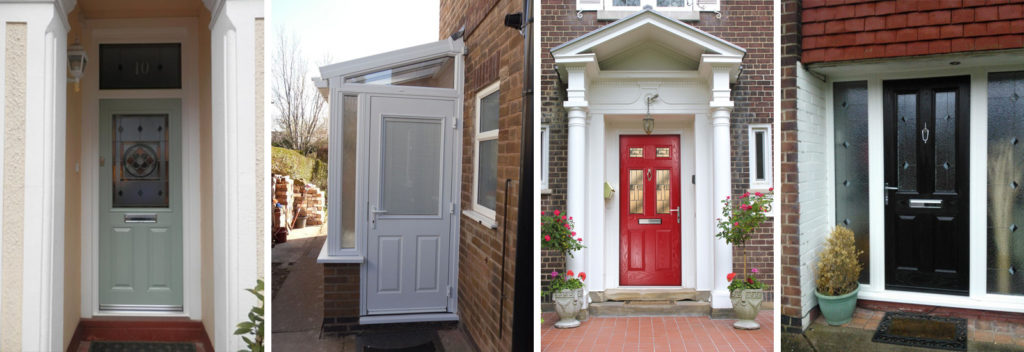Which are better, uPVC doors or composite doors for your Nottingham home? When it comes to choosing the perfect door for your home, it’s important to evaluate what materials would be most suited to your new door’s intended function. Weighing up uPVC vs composite doors, the latter are clearly advantageous for both front and back doors, though uPVC can still be a good option for the frames of larger patio doors.
| Feature | Composite Doors | uPVC Doors |
| Security | Excellent security | Less secure |
| Price | Slightly more expensive | Slightly cheaper |
| Recommended option | Front and back doors | Patio doors |
The advantages of composite doors
Our composite doors are made from several strong materials. The surface is a strong Glass Reinforced Polymer (GRP), which covers a core of insulating polyurethane foam and ABS reinforcement. This combination of materials ensures the highest levels of security, which is perfect for a front door. For this reason alone, composite doors make sense when you’re considering what type of front door to invest in. The durable material’s long lifespan also makes them the perfect investment for the long term.
When evaluating the differences between uPVC vs composite doors, the simple fact is that uPVC doors can be kicked in easily – it doesn’t take a lot of strength to get through a couple of sheets of plastic. KLG Rutland’s composite doors, on the other hand, are very hard to break through thanks to the ABS reinforcement running through their core.

In addition, composite doors offer a lot of flexibility in their design and manufacture. This means that KLG Rutland’s customers can design their own doors that are perfectly suited to their preferences. The innovative and colourful designs of composite doors are extremely aesthetically pleasing and can be completely personalised, in both the particular colour of the door, the glass panes, and the handle design, to name a few options.
The beautifully arranged glass designs and colours allow a significant amount of natural light into your home. This aids in ensuring a safe, yet welcoming feel with consistent sealing built in to provide greater thermal efficiency around your home.
uPVC doors
uPVC is more commonly used for patio doors. Its smooth finish is attractive, but not to the same extent as you can get with wood-effect composite doors. However, the material is perfect for many patio door designs as it makes a great frame for doors with large glass panels, like bifolds and french doors.
We try to avoid recommending uPVC doors for regular back doors for security reasons. With patio doors, the bulk of the door will be glass and only the frame is uPVC, but regular back doors feature uPVC panels that are easy to break through in comparison to composite panels. The improved supply of composite materials also makes these doors much closer in price to uPVC versions than they used to be, so there’s not even much of a cost difference.
However, our uPVC patio doors are available in multiple shapes and sizes and offer clean, attractive designs for both the interior and exterior look. KLG’s patented continuous seal is also applied to every installation of the doors, which also heighten the energy efficiency in your home. With these primarily glass doors, uPVC is perfect for the frames.
Composite or uPVC?
If you’re still unsure about whether to choose a composite or uPVC door, you just need to think about the location and use of the door.. For those looking for a front door or a regular back door, composite doors are by far the best option. However, if it’s a new patio door that you want, uPVC will work well for the frame.
Home → Doors → Doors FAQs → Composite doors vs uPVC doors


